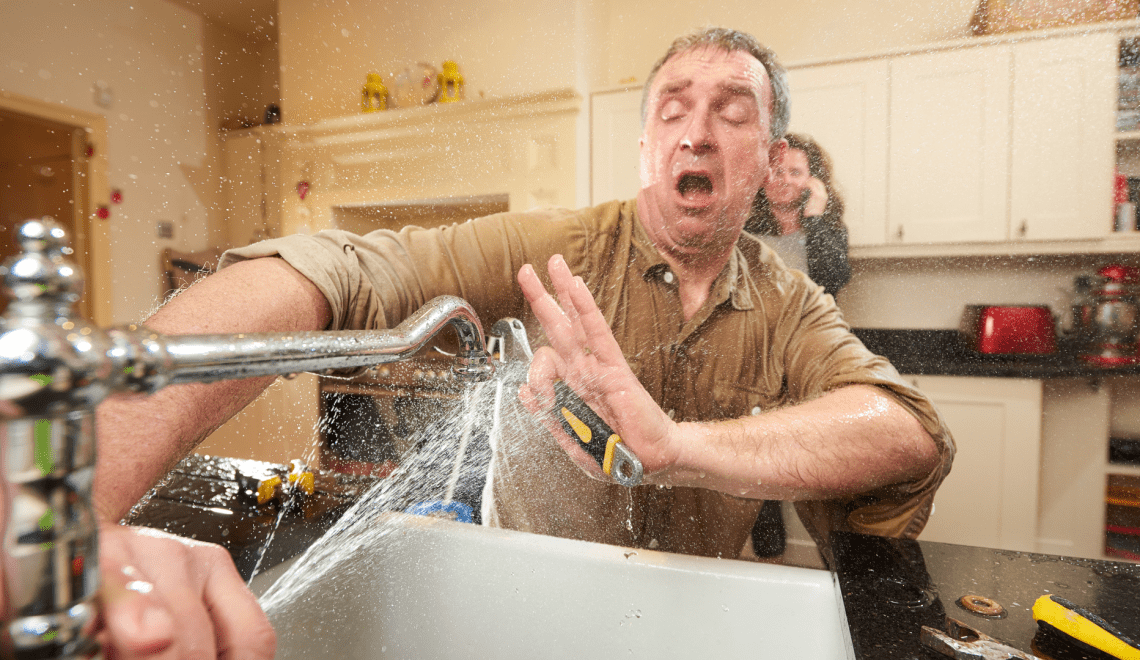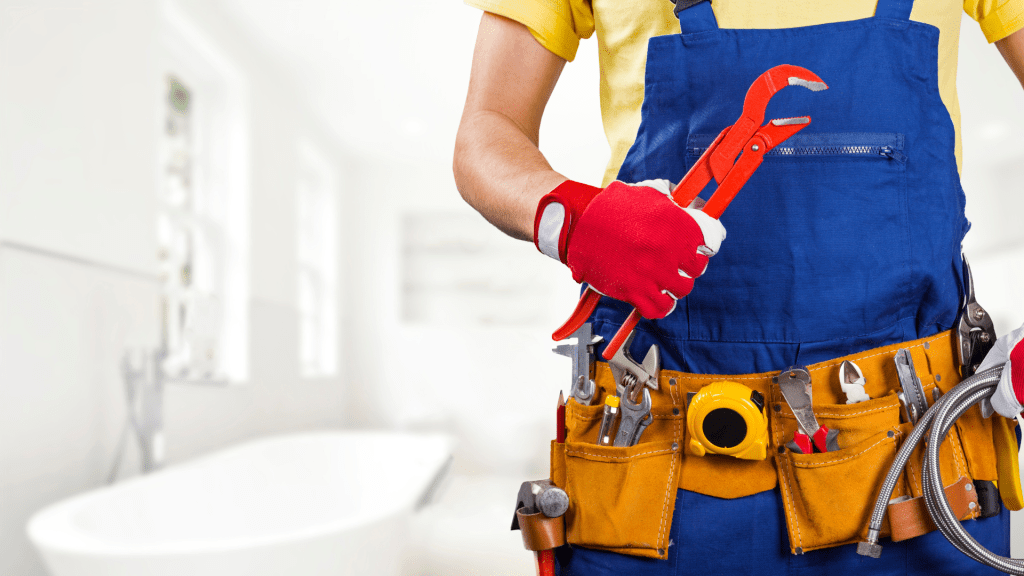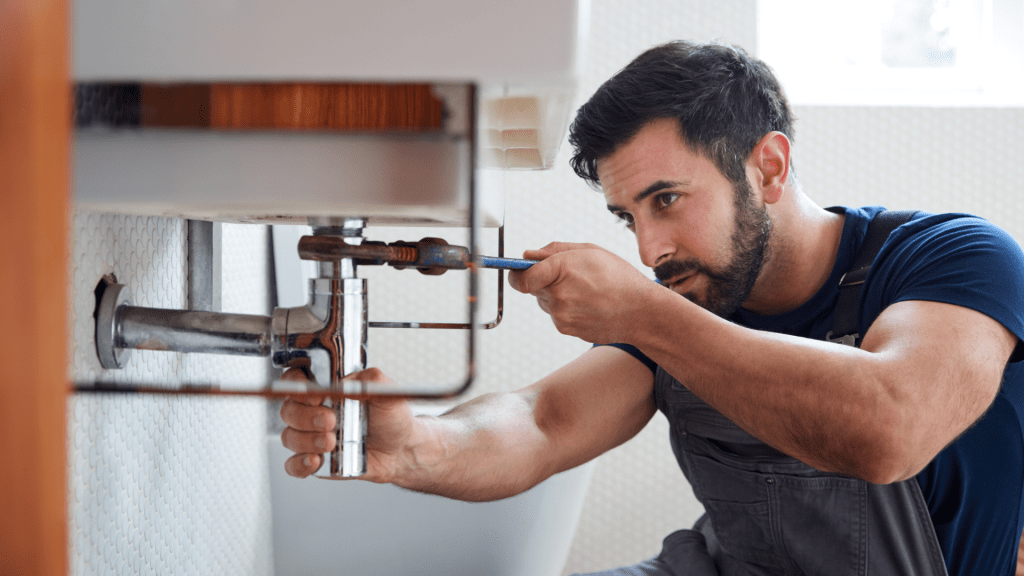
Plumbing issues – we’ve all had them. Whether it’s a leaky tap, a clogged drain or a toilet that just won’t flush properly, plumbing problems are as common as a burst of summer heat in the outback. The big question homeowners often face is: do you roll up your sleeves and fix it yourself or is it time to call in a professional?
With all the DIY resources out there, it’s tempting to take matters into your own hands. But not every issue should be tackled with a spanner and a YouTube video. Let’s take a look at the most common plumbing issues around Aussie homes and how to decide whether to DIY or dial up your local plumber.
1. Leaky Taps
DIY – most cases
Leaky taps are one of the most common plumbing problems and luckily one of the easiest to fix. Usually it’s a worn washer or O-ring. With a bit of patience and the right tools (think adjustable spanner, screwdriver and replacement washers) you can fix this yourself.
Call a Plumber:
If the tap continues to leak after you’ve replaced the washer or if the leak is coming from the base or handles it’s a more complex issue, like a cracked valve seat or corroded parts.
Pro tip: Always remember to turn off the water at the mains before starting any plumbing DIY!
2. Clogged Drains
DIY – to a point
Slow draining sinks or showers are often caused by hair, soap scum or food particles. Plungers, drain snakes and even natural solutions like baking soda and vinegar can often do the trick. Regularly maintaining your drains can help prevent these common issues from occurring in the first place.
Call a Plumber:
If you’ve tried the usual remedies and the drain is still blocked – or worse if multiple drains are backing up – it’s a sign of a deeper blockage in the sewer line. In this case professional equipment and experience are necessary.
Insight: In older homes especially in Sydney and Melbourne suburbs tree roots in clay pipes are a common cause of recurring drain blockages. This is definitely one for a licensed plumber.
3. Running Toilet
DIY – often manageable
If your toilet sounds like it’s constantly filling or the cistern takes forever to stop it’s usually due to a faulty flapper valve, float or fill valve. These parts are cheap and available at Bunnings or your local hardware store.
Call a Plumber:
If replacing the internal components doesn’t fix the issue or if you see water leaking from around the base of the toilet you’re better off calling a plumber. Leaks can cause water damage to your flooring and subflooring leading to bigger and more expensive problems.
4. Low Water Pressure
Depends on the cause
Low water pressure can be a mystery. If it’s just one tap or shower head affected it might be a clogged aerator or sediment build up. These are easy to clean out yourself with vinegar and a bit of elbow grease.
Call a Plumber:
If it’s your whole house affected it could be a leak in the system, corroded pipes or issues with your water supply. Diagnosing and fixing these problems usually requires professional tools and know-how.
5. Burst Pipes
Plumber – always
Burst pipes can cause major water damage in no time. If you see a burst or suspect one (look for water stains, pooling water or sudden loss of pressure) turn off the mains immediately and call a licensed plumber.
In most Aussie states including NSW, VIC and QLD you’re required by law to have a licensed plumber do significant water plumbing work – burst pipes included.
6. Hot Water System Issues
Plumber – almost always
No hot water? It’s frustrating, especially in winter. Sometimes the fix is simple – like relighting a pilot light or checking the circuit breaker. But more often than not hot water system issues involve gas, electricity or complex mechanical components.
Call a Plumber:
If you’re not confident working with gas or electricity, call a professional. Gas appliances must be serviced by a licensed gas fitter – it’s the law in Australia and for good reason: safety.
7. Installing New Fixtures
DIY or Plumber? Depends on your skill level and the fixture
Replacing a showerhead or tap is a satisfying DIY job. But installing a new toilet, sink or dishwasher often involves connecting to existing plumbing lines and making sure everything is watertight.
Call a Plumber:
If you’re moving fixtures or adding new plumbing lines this is a job for a licensed plumber. Not only do you want it done right but dodgy DIY jobs can void your home insurance or cause compliance issues when you sell your property.
Australian Legal and Safety Considerations
In Australia the laws around plumbing work are strict. Most states require major plumbing or drainage work to be done by a licensed plumber. This includes anything to do with gas fittings, water supply, sewer connections or water heaters.
Doing unauthorised work can result in hefty fines – in some cases up to $22,000 – and may also void your insurance in the event of water damage or fire.
If in doubt, always check with your state’s plumbing authority. For example:
- NSW – NSW Fair Trading
- VIC – Victorian Building Authority (VBA)
- QLD – Queensland Building and Construction Commission (QBCC)
Finding the Balance Between DIY Confidence and Professional Plumbing Care
Knowing when to DIY and when to call a plumber can save you money and stress. Basic maintenance and minor repairs are great DIY opportunities and will give you confidence as a homeowner. But for more complex issues or anything that could compromise your home’s safety or legal compliance it’s worth investing in a licensed plumber.
Remember just because you can do something doesn’t always mean you should. A small mistake can lead to costly repairs down the line – and when it comes to water damage can accumulate quickly.
So next time your tap drips or the loo won’t flush ask yourself: “Is this a quick fix or a plumbing pitfall?” If you’re ever in doubt a quick call to a local plumber for advice will point you in the right direction.











